-
Car Reviews
- Car News
-
Car Comparisons
Latest comparisons
- Chasing Deals
The new Tiguan blends upgraded interior materials with enhanced driving dynamics. Is the athletic, polished 150TSI R-Line the sweet spot?
Volkswagen’s unique selling point is that it offers Australians elevated, sophisticated vehicles for not much more cash than mainstream rivals. The Tiguan midsize SUV — Volkswagen’s global and Australian best-seller — is supposed to spread that special feeling to the family car segment.
That’s the reputation Volkswagen has enjoyed — and traded upon — in Australia for years. But for the last decade, that advantage slowly faded as the carmaker battled multiple fires internally — from paying off ‘dieselgate’ penalties, to an initially addled EV strategy, and reversing from a bungled buttonless interior concept buyers disliked.
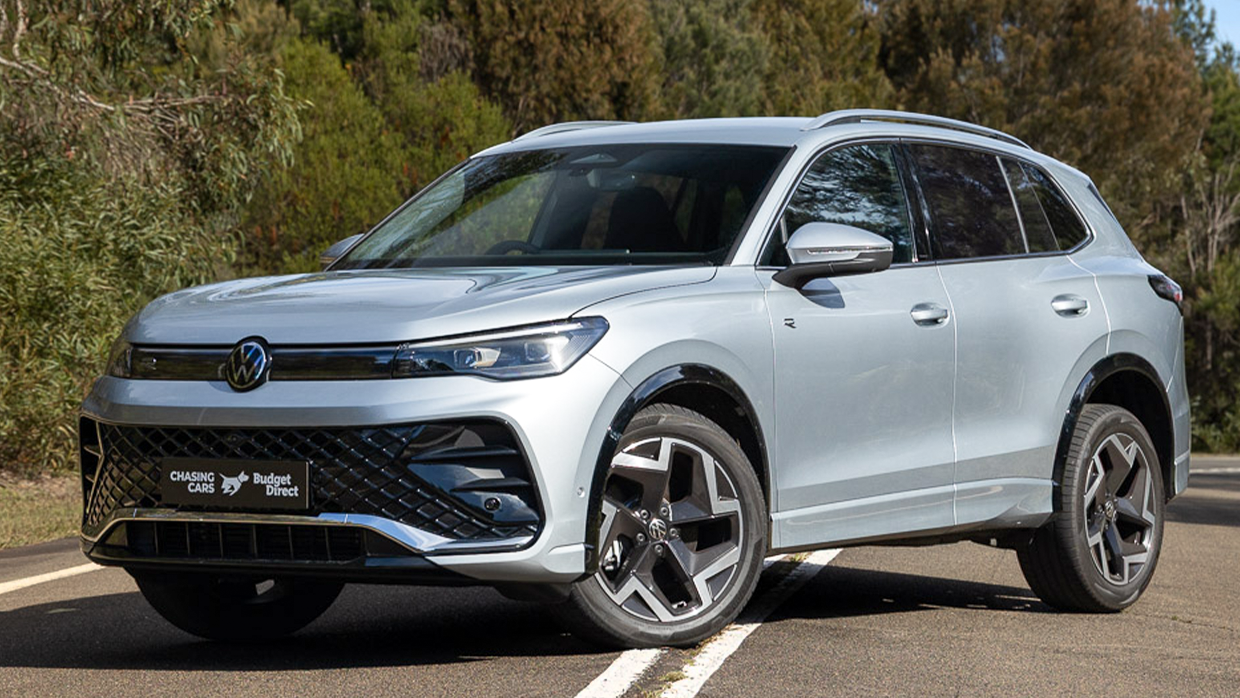
Simultaneous corporate headaches robbed cash from the R&D and product engineering teams that kept Volkswagen models on top of their respective segments for so long and threatened to destabilise VW’s “premium for the people” mantra.
Then, in 2022, Volkswagen appointed a ruthless new CEO, Thomas Schäfer, who cracked skulls in Germany, redirecting more money back to the engineering of new cars.
But how does that relate to the Tiguan? Well, Schäfer’s plan to restore high-quality carmaking influenced the second half of the development of the new Tiguan. As we suspected at launch, that was enough time to infuse the new-gen SUV with superior quality while retaining its signature driving dynamics.
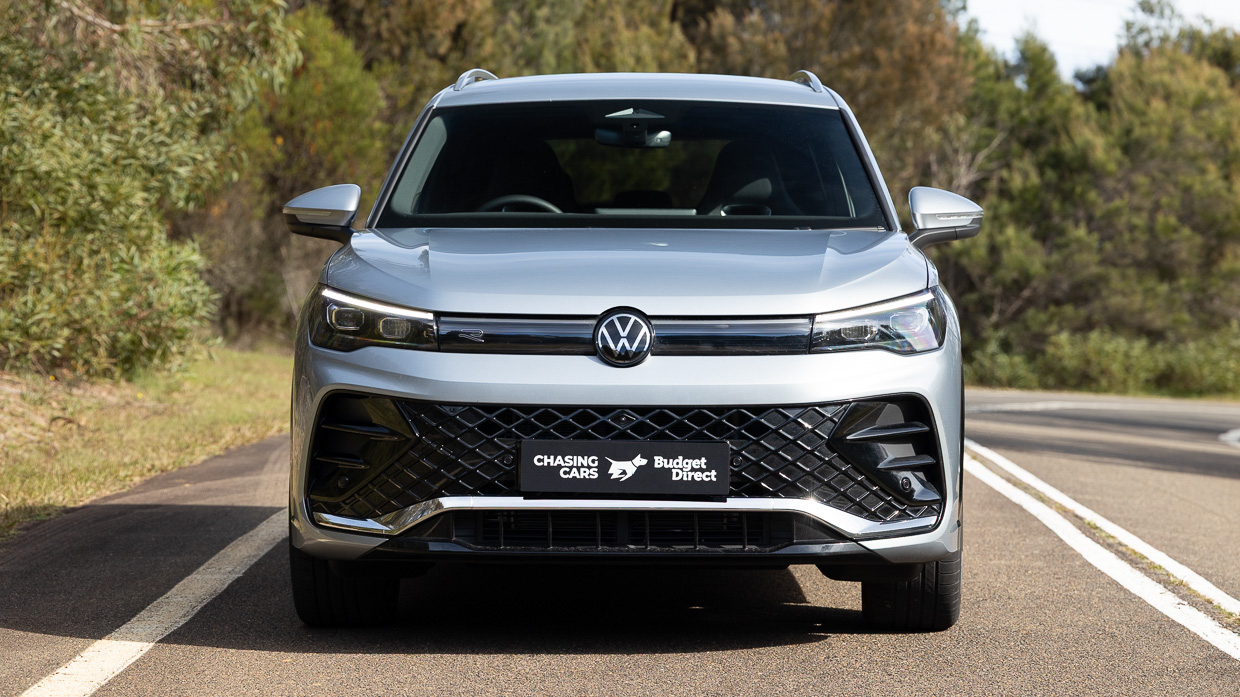
A more in-depth road test of the 2025 Tiguan in sweet, mid-tier 150TSI R-Line trim ($55,990 plus on-road costs) has confirmed the view that Volkswagen is back on form. Intelligently, VW’s ‘comeback’ starts right here, with its most important vehicle.
Other than its introduction of the ID4 and ID5 electric SUVs, Volkswagen Australia’s plan to steady the ship and replenish its sales is effectively to stick to what it knows.
That’s why — for now — the Tiguan range is straightforward and based around turbo-petrol engines. In future years, expect to see complexity grow with the introduction of hybrid powertrains.
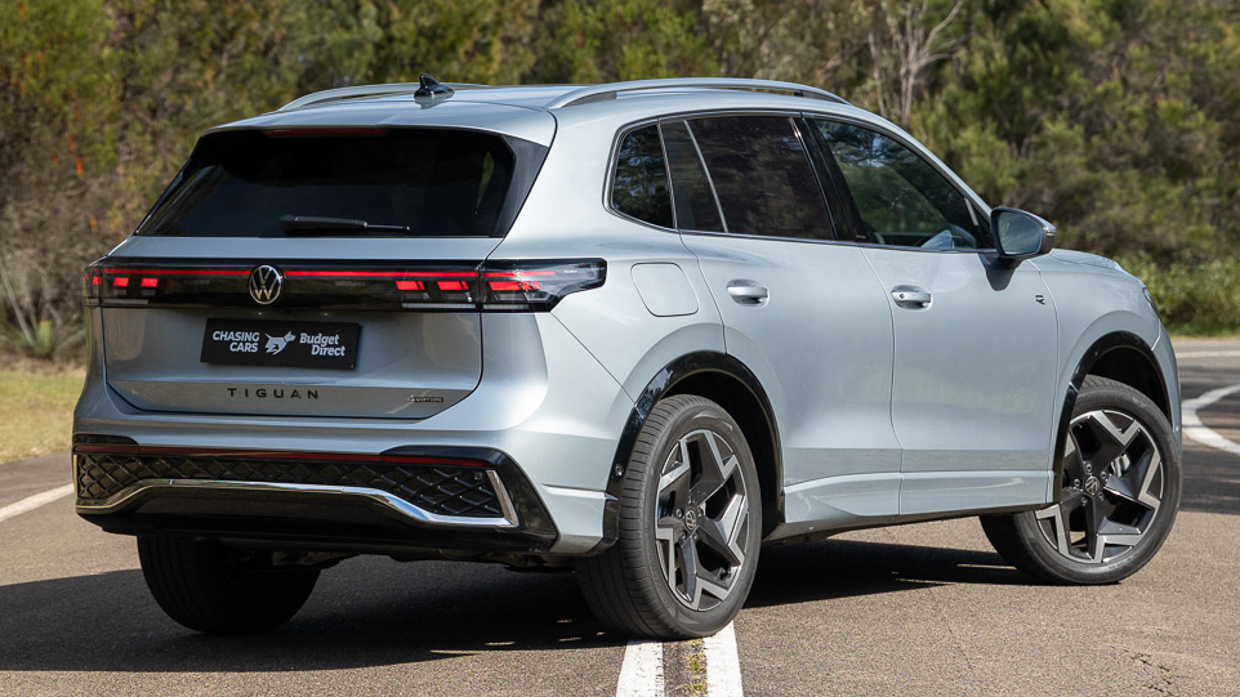
As ever, there’s a cost to buying a Volkswagen over familiar Japanese, Korean and Chinese rival crossovers in Australia. Compared to familiar Japanese and Korean rivals the upper-mid spec Tiguan attracts about a ten percent upcharge. In 2024, 4582 Australians were happy to pay that premium. VW will be hoping for more this year.
Broadening the Tiguan’s attractiveness, even the ‘entry’ grade is well-equipped, with the sub-$50K-driveaway 110TSI Life has niceties including 19-inch alloys, auto LED headlights, a 12-inch touchscreen, navigation, wireless CarPlay/Android Auto, three-zone climate control, dual wireless chargers, 45-watt USB-C ports, 360-degree camera, and ambient lighting.
Spending more on the 110TSI Elegance seems like value considering it adds leather trim, 12-way power-adjustable ‘ErgoActive’ massaging/heating/cooling front seats, a heated steering wheel, higher-grade headlights, acoustic glass, and handsome chrome trim.
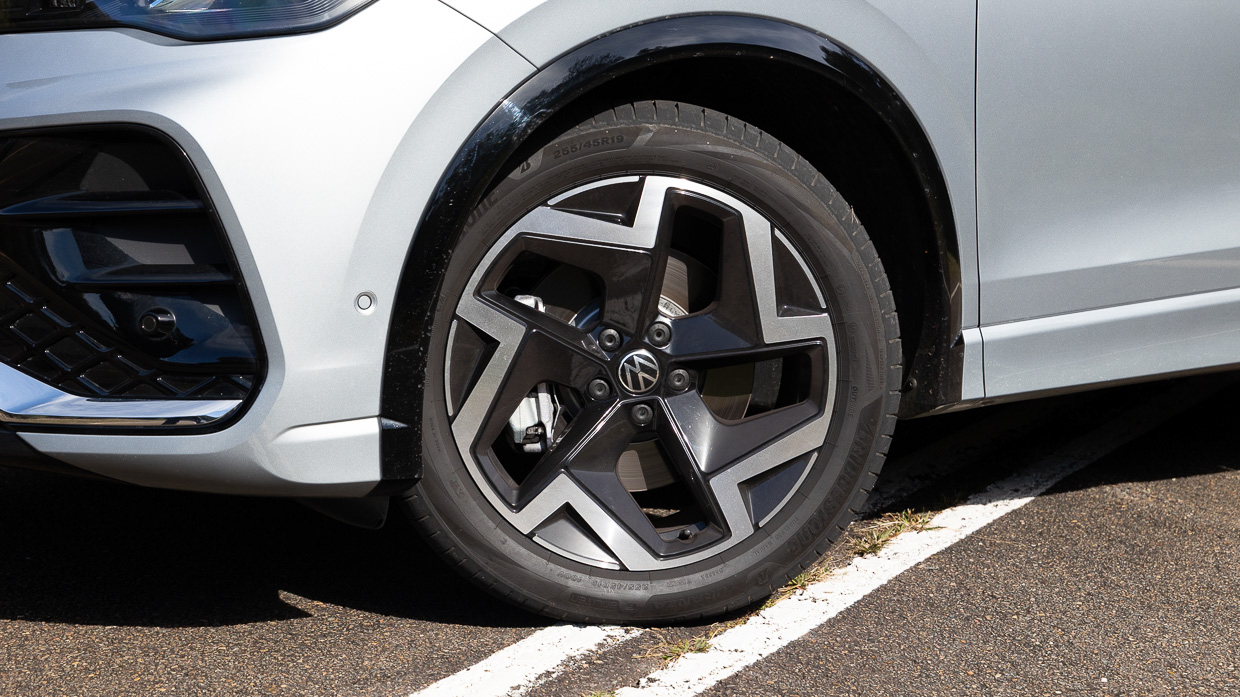
Heading north from the 110TSI front-drivers, the Tiguan range forks into more powerful, all-wheel drive 150TSI territory. Keen drivers can opt for a better-steering R-Line grade ($61K driveaway) on meatier tyres — or Aussies can choose to retain a luxe Elegance trim ($66K driveaway) with more demure handling and higher spec.
Compared to the 110TSI Life, the 150TSI R-Line grabs wider tyres, progressive-ratio steering, DCC Pro adaptive dampers, massaging sports seats (manually adjusted), microfleece/leatherette upholstery, LED Plus headlights, stainless steel pedals, and sportier exterior/interior styling.
Meanwhile, the 150TSI Elegance continues on narrower tyres and with fixed-ratio steering but retains the 110TSI Elegance’s luxe power/leather interior while also scoring top-tier IQ Light matrix LED headlights, a 700-watt Harman-Kardon premium stereo, 15-inch Discover Pro Max infotainment, a heads-up display and sweeping indicators.
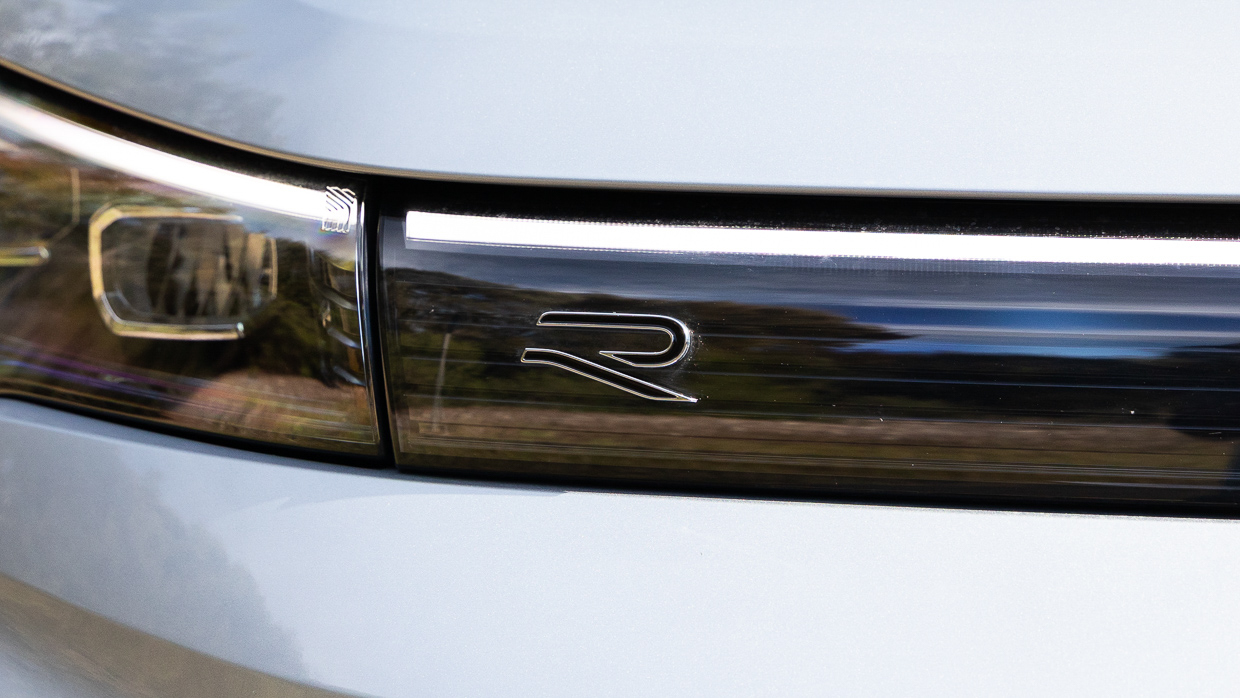
Lastly, the all-singing, all-dancing 195TSI R-Line ($76K driveaway) bridges the gap until a new Tiguan R arrives, slinging Elegance-level interior plushness alongside 20-inch wheels, wide tyres and variable-ratio steering. Like its 150TSI siblings it too is chrome-adorned but can be blacked-out for $1500 more.
Our 150TSI R-Line tester was largely unoptioned, but punters can add a Sound and Vision Package ($2700) bringing the bigger Discover Pro Max screen, HUD and Harman-Kardon stereo, or an opening panoramic glass sunroof ($2100). Oddly, heated power-adjustable seats simply cannot be added to a 150TSI R-Line.
Paint-wise, sophistication was the order of the day for our tester’s Oyster Silver hue, one of six optional metallics. Like Grenadilla Black, Nightshade Blue and Dolphin Grey it costs $800; deeper Cypress Green and Persimmon Red are $1100. Pure White is the only no-cost colour.
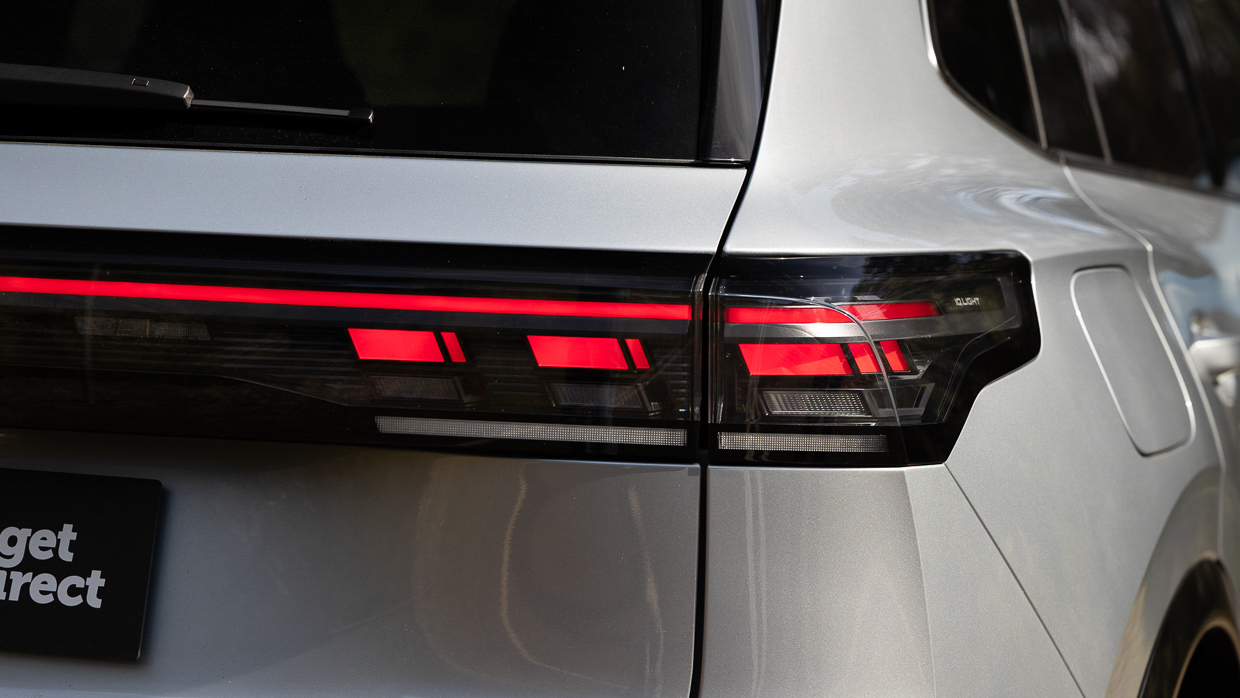
All Tiguans have a space saver spare wheel as well as a basic level of online connectivity, with the white label GoConnect app displaying vehicle location, trips and warnings. A full IQ Assist safety suite (detailed in the segment below) is included.
See below for a full list of Tiguan variants — for now — along with indicative driveaway price for Sydney residents.
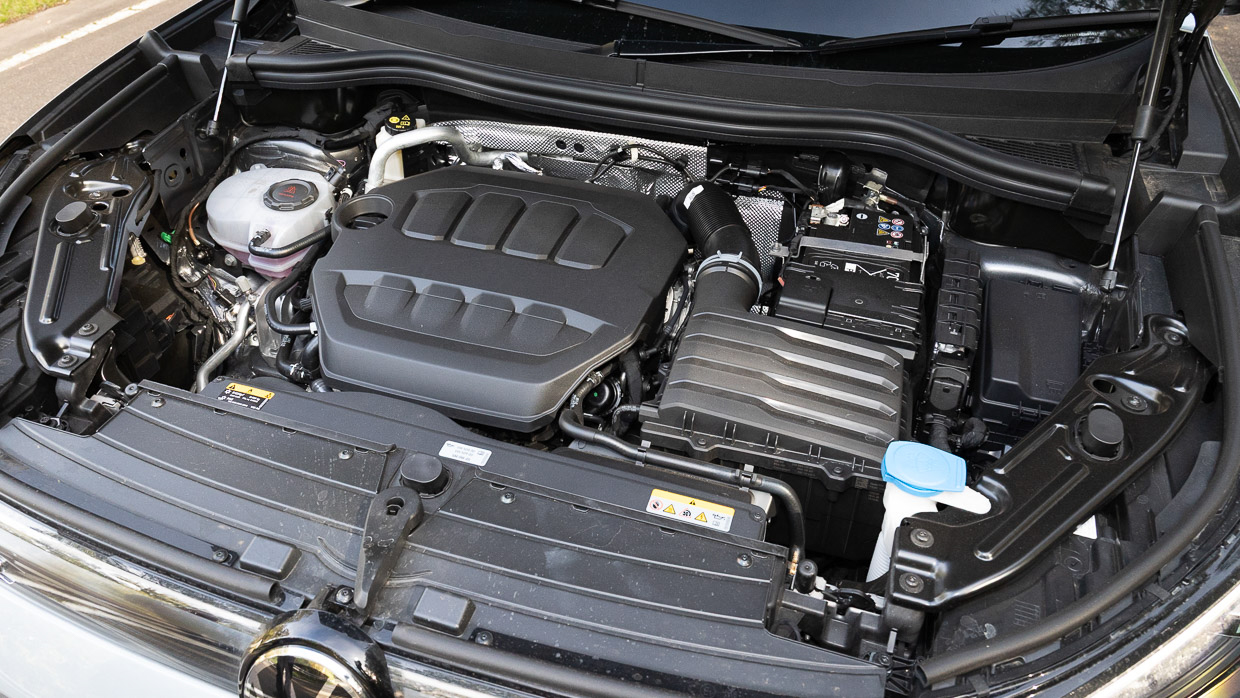
Here’s where the 150TSI R-Line variant on test is priced versus close rivals, with indicative driveaway pricing provided:
During its turbulent last decade, Volkswagen valiantly isolated driving dynamics from cost-cutting. While the previous-gen Tiguan was a bit mean inside (with a lot of harsh plastics) it was the undisputed best-driving vehicle in the midsize SUV segment.
These days it’s harder to make such a big call because the onslaught of EVs into the $60k crossover space have complicated matters with their low centres of gravity and typical use of handling-friendly rear-wheel drive. Indeed, the new ID4 ($65K driveaway) is impressive to drive.
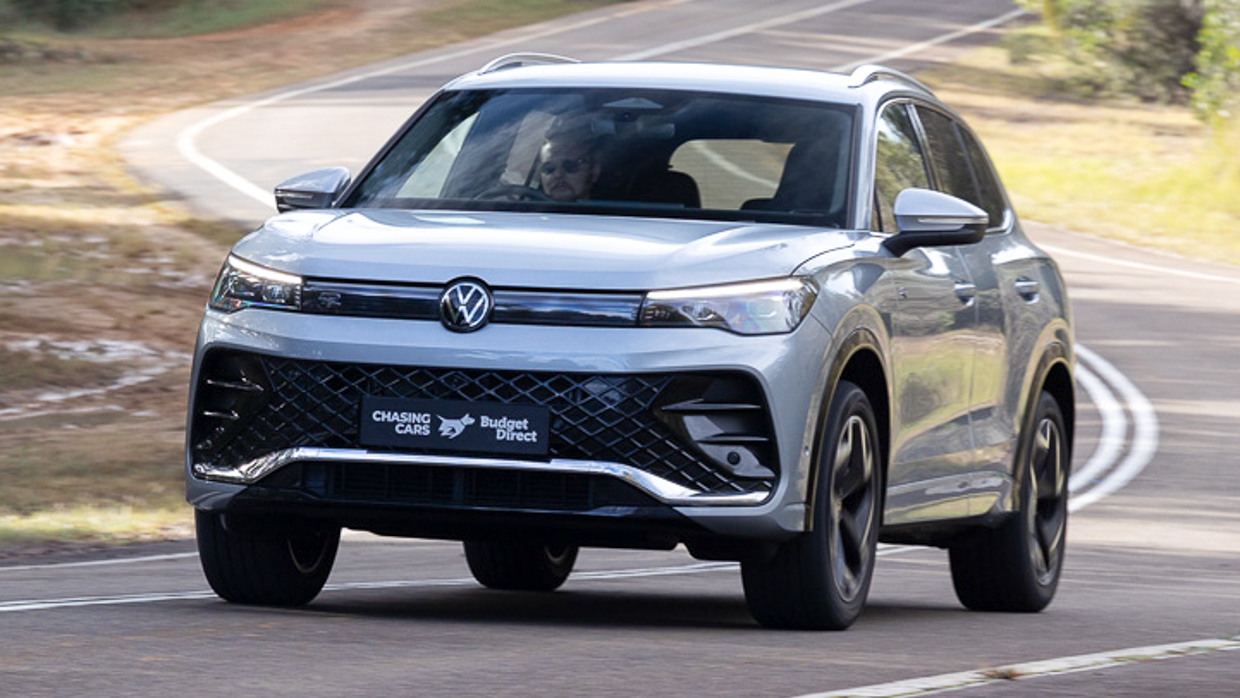
But we can say with near-certainty that, among non-electric mainstream SUVs on sale today, the new Tiguan is best-in-class for driving dynamics — and the 150TSI R-Line is uniquely specified to be the cream of the Tiguan crop, blending approachable pricing, adequate power, sensibly-sized wheels, grippy rubber, and an excellent suspension.
We appreciate that for a good many buyers ‘more is more’, but while the 195TSI R-Line that demands another $15,000 from buyers is 30 percent more powerful and 1.2 sec faster from 0-100km/h than the 150TSI’s 7.1 second claim, it loses the 150’s ultra-supportive bucket seats and steps up to 20-inch wheels that are less suited to country road blasts.
Plus, it’s not as if the 150kW/320Nm engine feels slow. To the contrary, its enhanced marriage to an (upgraded) seven-speed wet-clutch DSG automatic keeps the 2.0-litre turbo on the boil more of the time than the old 162kW/350Nm tune, helping to explain why the new one is barely slower.
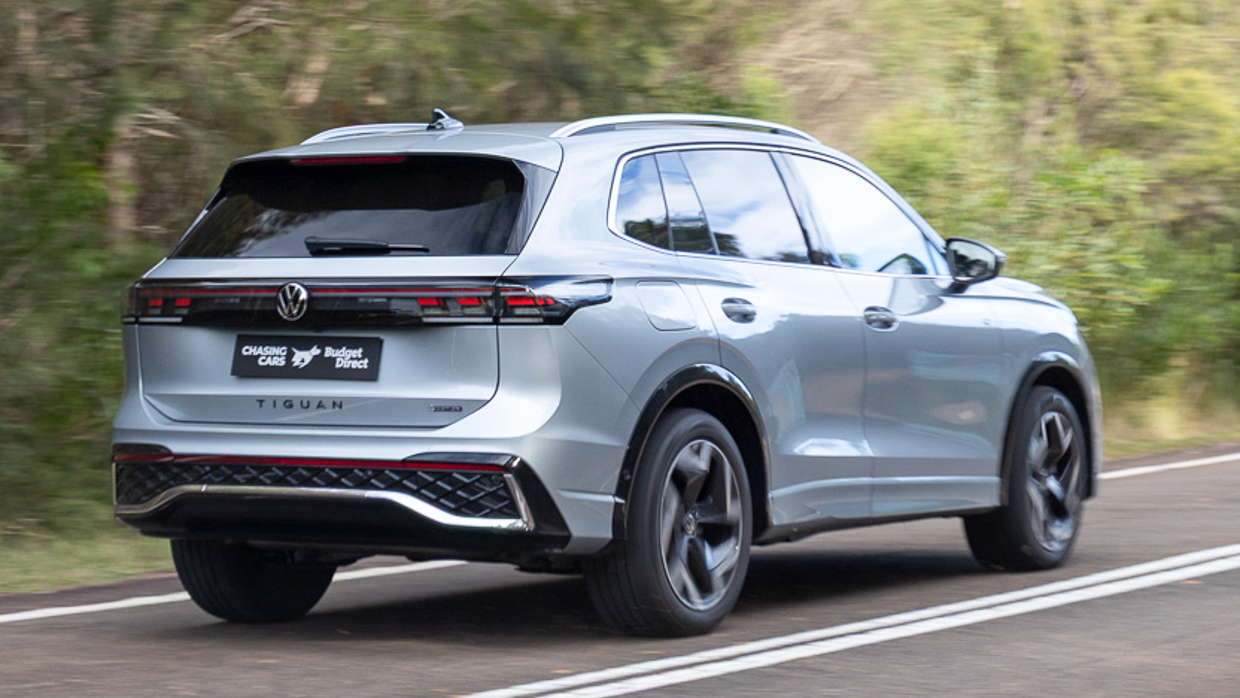
In town, the 150TSI feels crisp and responsive — and well-paired to the 4Motion all-wheel drive system that eliminates launch slip on greasy roads. Freeway onramps and country routes show its accelerative spirit. It’s quick enough. The brakes, too, have a positive feel and haul up the relatively hefty 1758kg Tig’ in quick time.
But the real magic is in the MQB Evo chassis. While it sees its electrical cabling upgraded to support slicker adaptive safety tech and future plug-in hybrid powertrains, the expertly crafted geometry and balance of the old Tiguan’s MQB architecture carries across in refined form.
While all Tiguans ride and handle capably, the firm passively-sprung posture of the 110TSI is elevated dramatically in 150TSI form by the addition of Volkswagen’s twin-chamber DCC Pro adaptive dampers. They nominally offer 15 stages of adjustment (overkill) but crucially bequeath vast bandwidth to the Tiguan’s body control and suspension compliance.
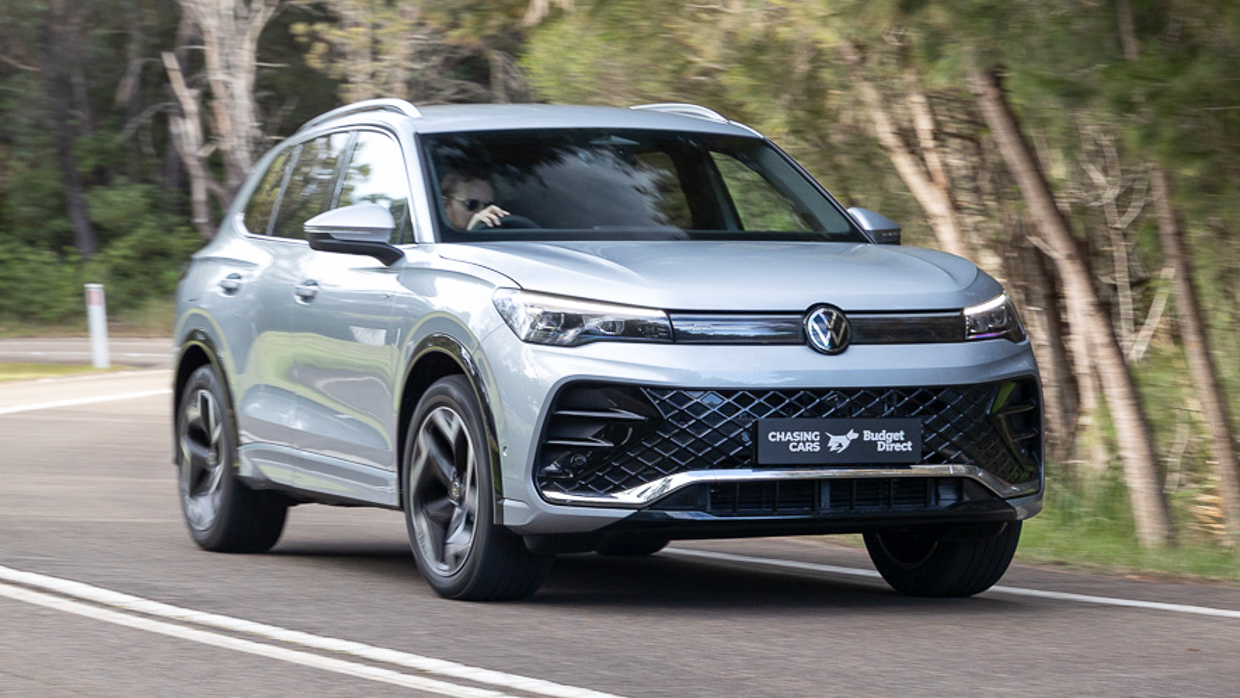
The combination of the suspension’s comfort mode, and the 150TSI R-Line’s high-profile tyres, had our jaw dropping as we struck urban potholes — what potholes! The low-speed ride is incredibly supple, rounding off imperfections beautifully. Firmness does increase with speed (or in sport mode) but the demeanour is always one of comfort.
And one of control, too! Select sweet-spot individual mode damping between Comfort and Normal, point the 150TSI R-Line at a technical and twisty road and it makes hay, handling more like a Golf wagon than a high-set SUV.
Feelsome steering, good grip, excellent body control and liberal stability control conspire to make this car fun.
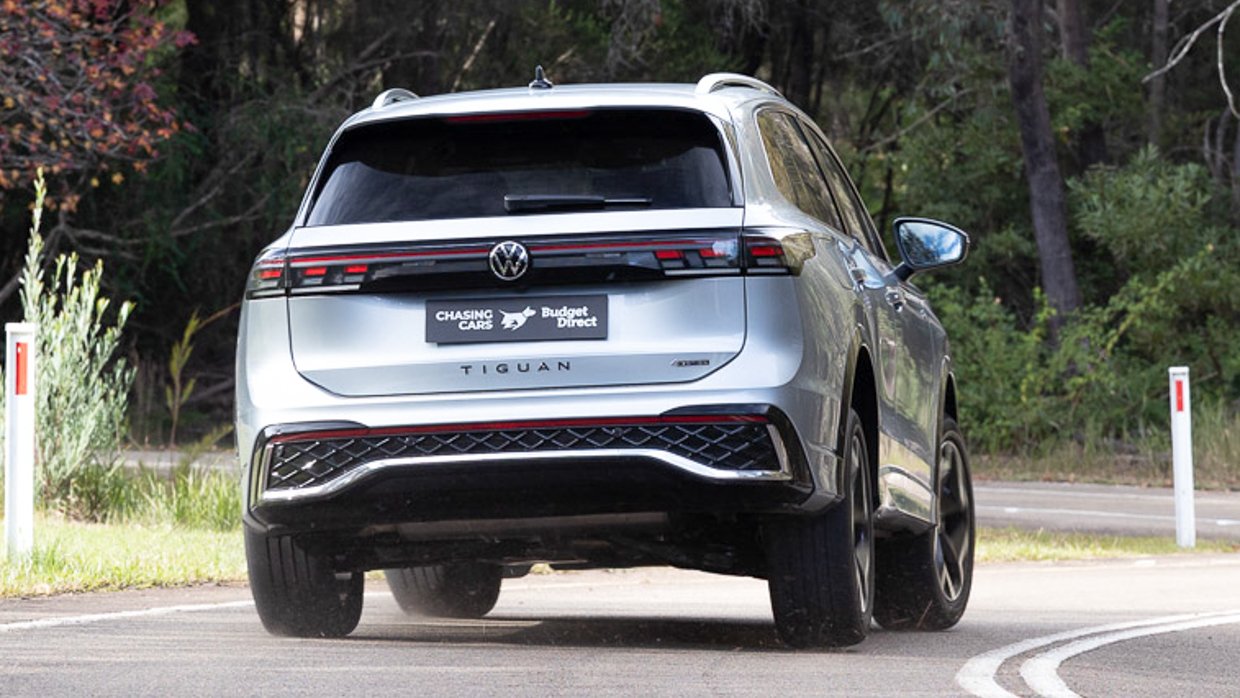
Visibility out of the conventional glasshouse is solid. The only big demerit relates to refinement. As with other Volkswagen Group cars set on the MQB platform, there is too much road noise on coarse chip surfaces and at freeway speeds.
Perceived interior quality was the area in which the Tiguan needed to make up ground, and it has.
While the old one was built pretty well, Volkswagen slashed expense in the cabin by subbing out the sort of plush plastics found in VW cabins in the 2000s for shiny, hard stuff anywhere below the steering wheel.
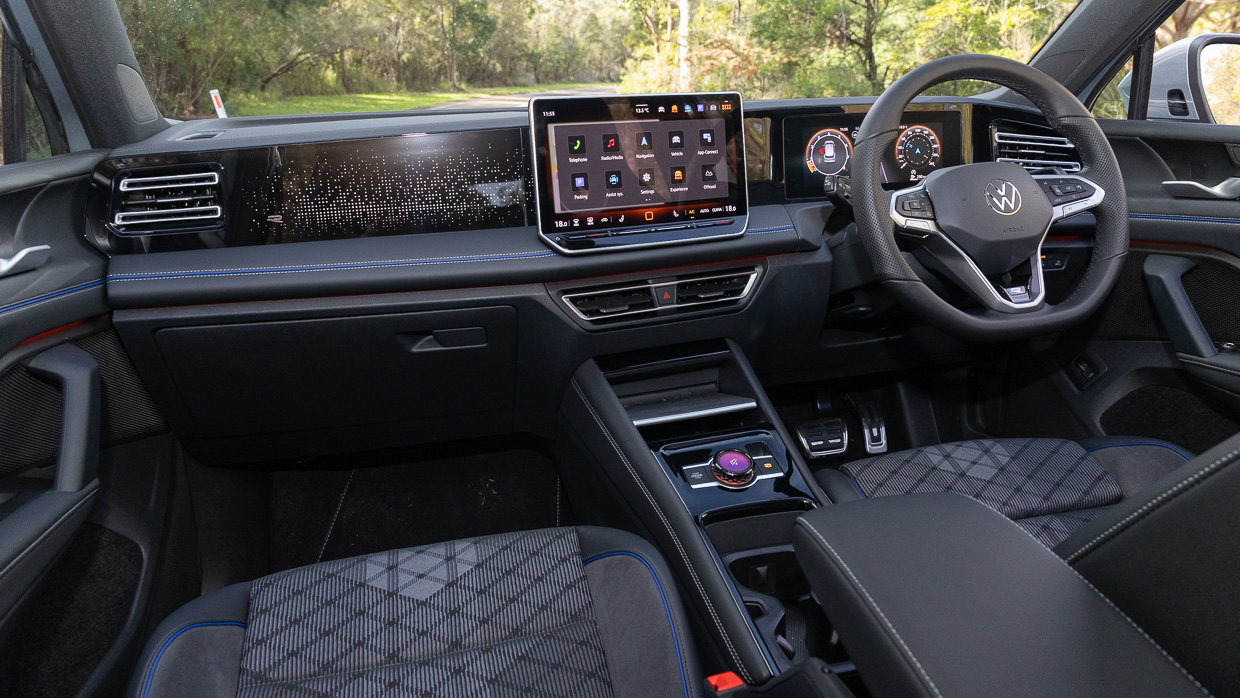
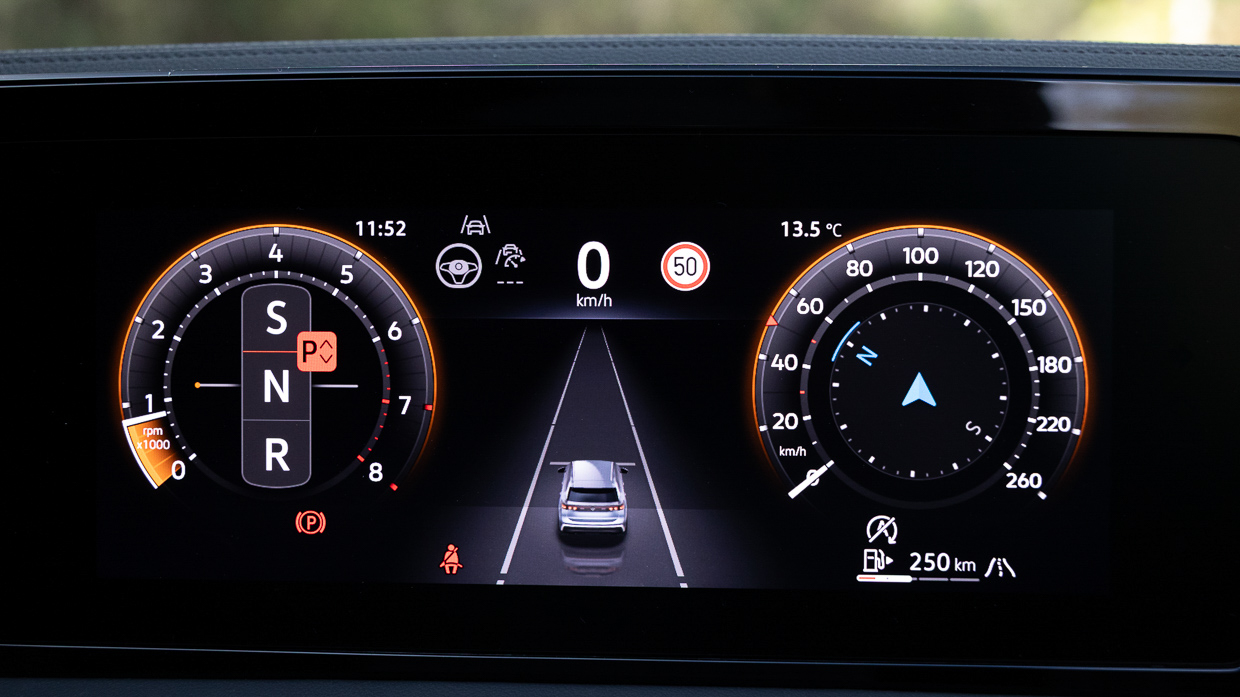
That might not sound like a big deal, but it is. While the previous Tig’ drove well and had a roomy interior, it’s the accumulation of ‘little luxuries’ that justify a Volkswagen over a Kia or Hyundai.
The new Tiguan enhances the pace, retains the space and adds more than a little grace. A leather steering wheel and soft front door skins are standard (of course!), but all bar the 110TSI Life also pick up extensive plush trimming around the centre console, where your knee rests, lifting the feeling of softness and refinement through the cabin.
Returning to Volkswagen interiors is more hardware as the company abandons previous CEO Herbert Diess’s unloved push to capacitive touch controls. For now, the steering wheel returns to real buttons; while either available touchscreen still buries too much within it, rumour has it that climate and volume knobs will return in the coming years.
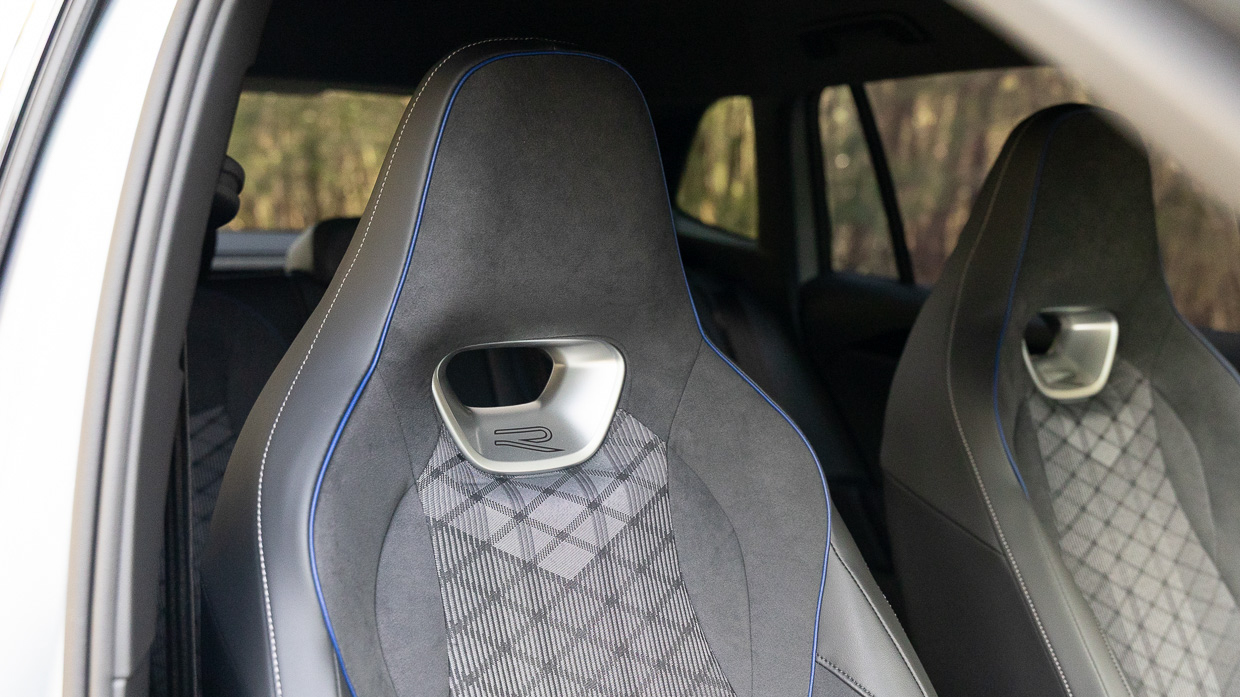
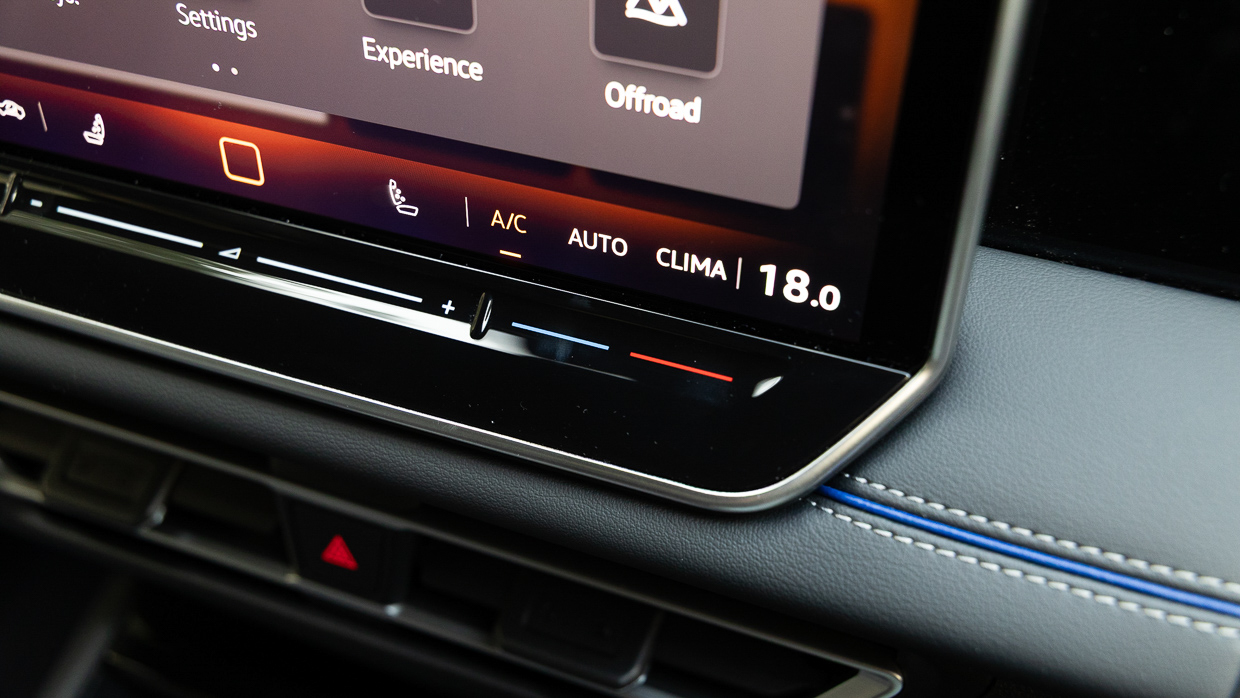
That said, we have little problem with the touchscreens, available in 12.0- or 15.0-inch sizes. Our tester’s 12.0-incher seemed big enough, with crisp resolution and great response times courtesy of beefed-up MIB4 chipsets.
The wireless Apple CarPlay connection was solid and audio quality from the standard eight-speaker stereo sounded good.
Depending on your perspective, the 150TSI R-Line’s front seats will be a blessing or a curse. They are the most supportive seats of the entire Tiguan range: a single-piece bucket trimmed in microfleece with four-way power lumbar and massage. But the rest of the chair is manually-adjusted (annoying for couples) and unheated.
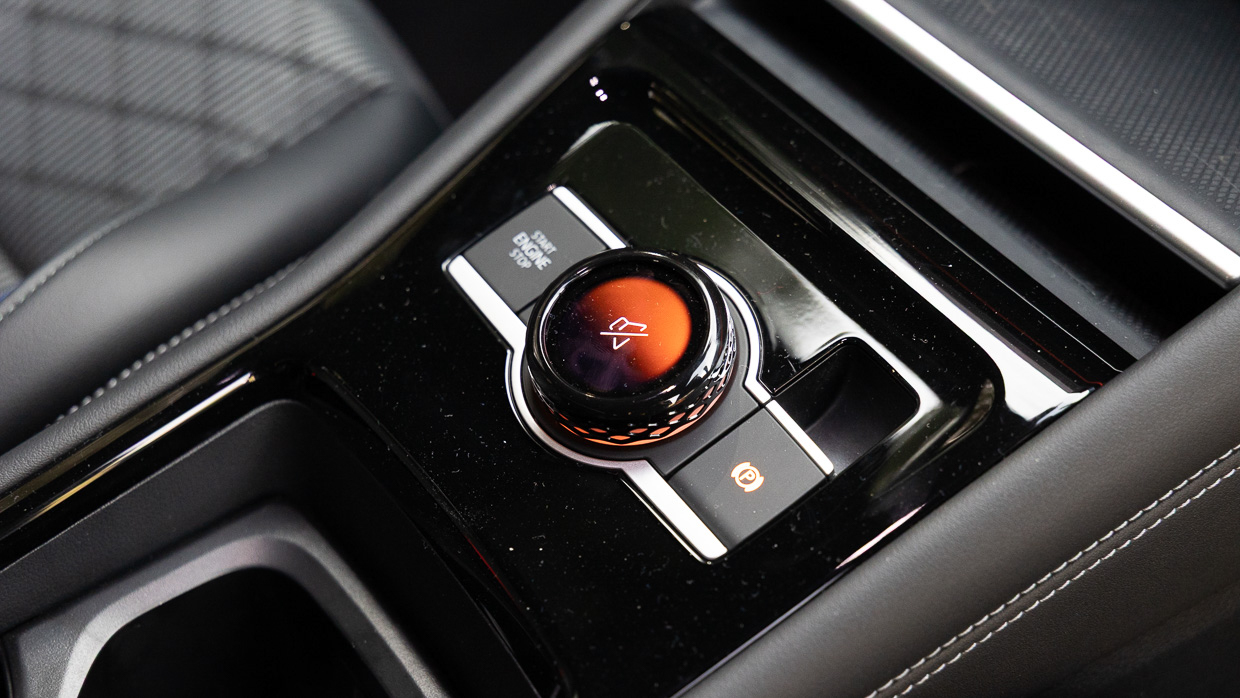
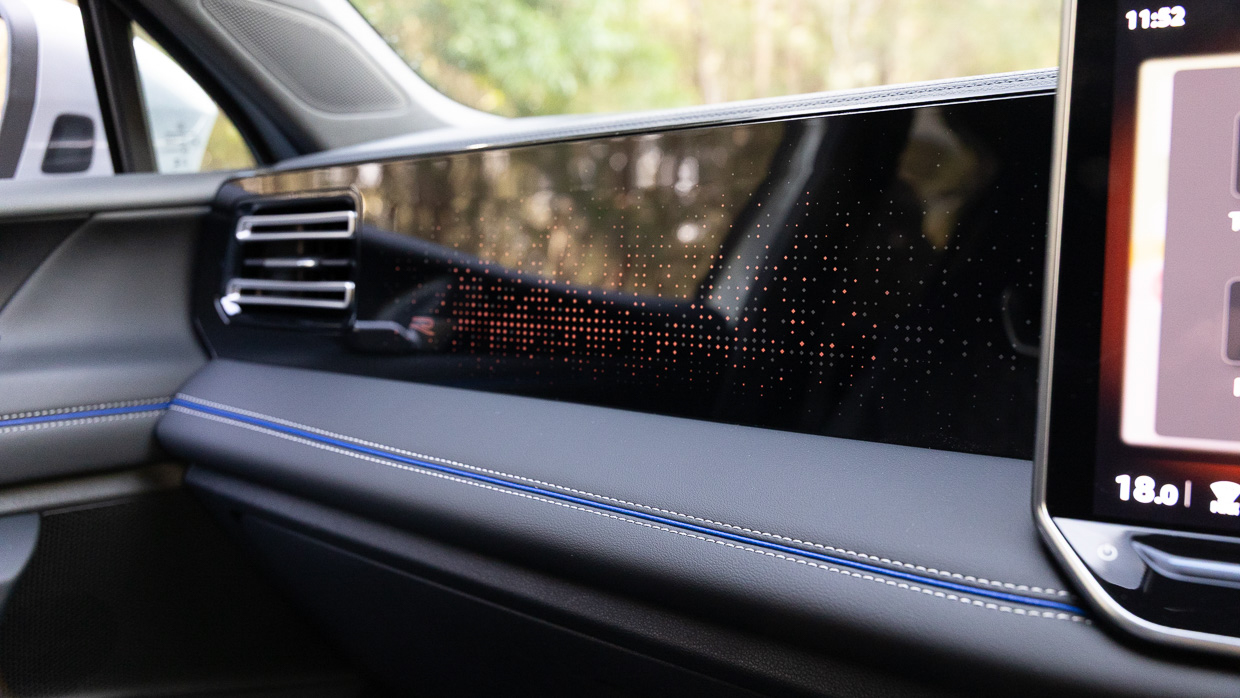
The problem is that Volkswagen hasn’t even developed a heated, powered version of this seat. Opt for the more powerful 195TSI R-Line and you lose the bucket shape (and the high side bolstering) and instead receive the 150TSI Elegance’s 12-way power-adjustable ErgoActive pews finished in leather with heating and cooling.
At least the storage is straightforward and plentiful, with smartly-designed trays, big cupholders, dual phone chargers, large carpeted door bins and a damped glovebox all lending to the view that the ‘little things’ are coming back at Volkswagen.
The back seat remains enormous for the class with tall adults (let alone children) easily accommodated.
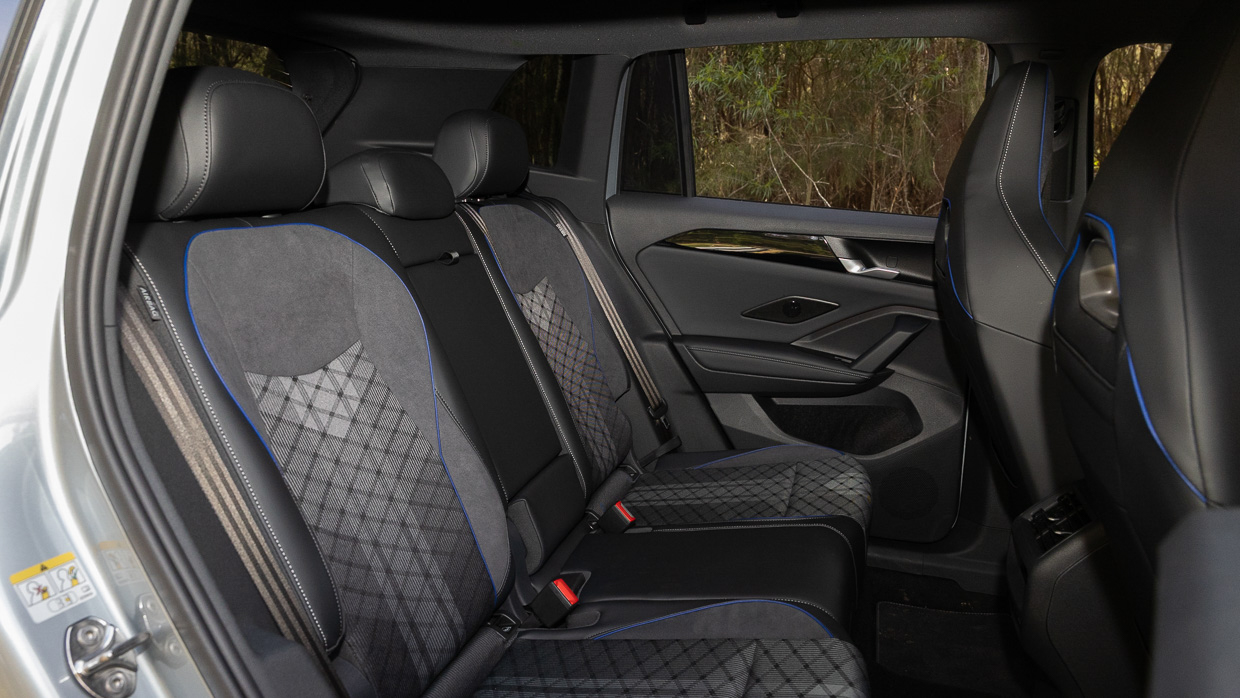
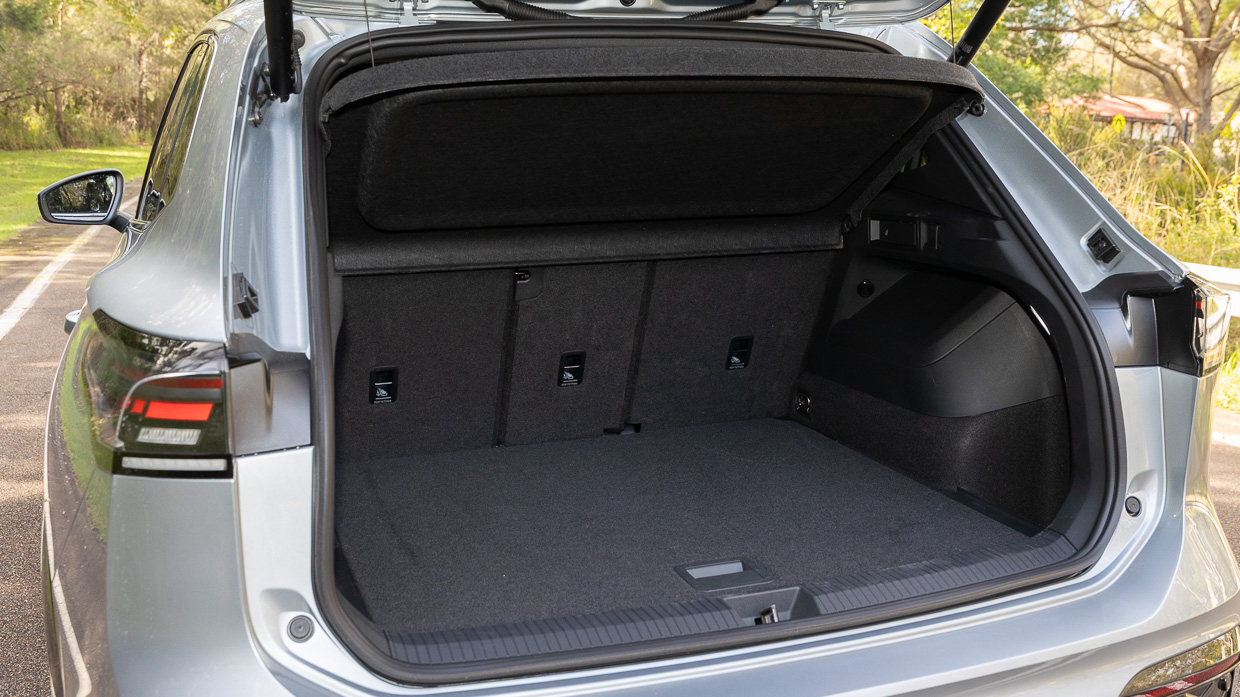
Row two can be folded 40/20/40 remotely from the cargo area; it reclines and is on rails, allowing it to be pushed forward to max out boot capacity at a vast 652 litres. A variable boot floor is standard (deleted if you option the Harman-Kardon stereo).
The new Tiguan has already received a five-star crash and safety rating from ANCAP, which translated the testing results of the car from Euro NCAP.
The individual safety scores given by ANCAP to the new Tiguan, under the 2024 protocol, were:
To keep it simple, all Tiguan variants get the same, high level of safety features with even the base model scoring the IQ Assist suite that bundles autonomous emergency braking (AEB) that works in forward and reverse, lane keeping and strong lane centring, blind spot monitoring, and door opening exit warning.
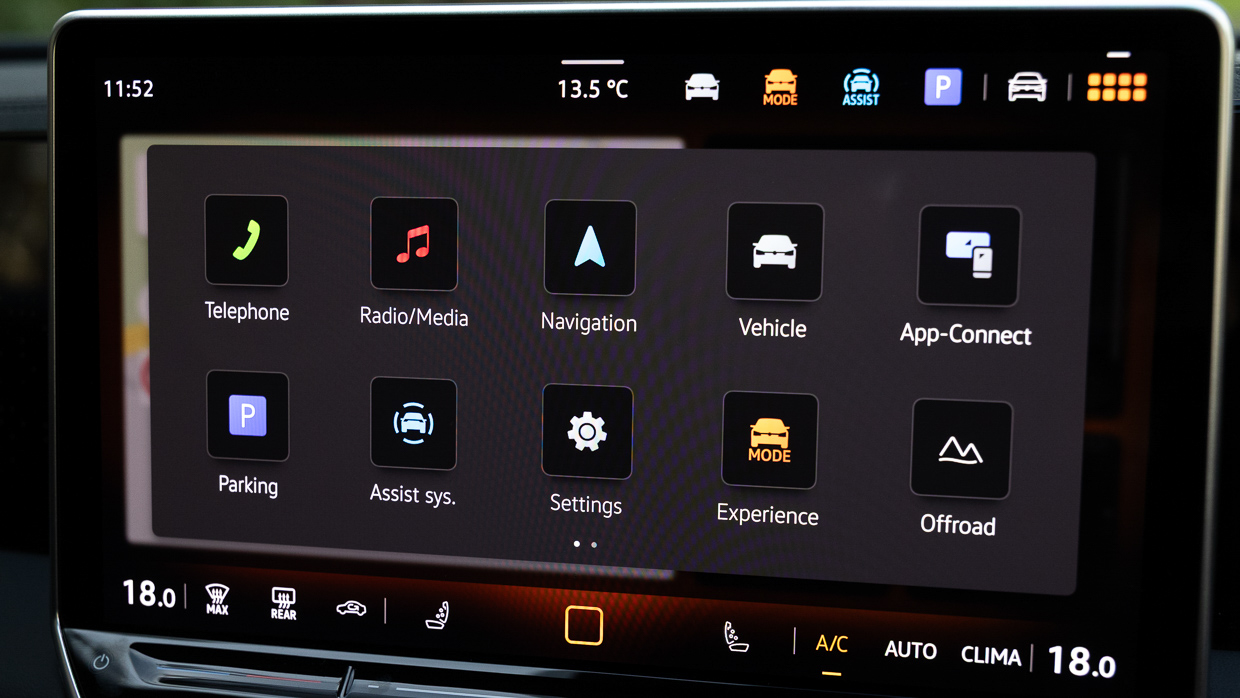
Beyond that, a 360-degree camera, driver attention monitor, automatic tilting passenger side mirror (in reverse), semi-automated parking, low tyre pressure indicator and automated parking are standard.
We were able to test the Tiguan’s adaptive cruise control, lane keeping, blind spot and parking systems, including the strong ‘Travel Assist’ mode that deftly combines smooth adaptive cruise and lane centring on the motorway.
As with most modern Volkswagens, the tuning of the safety features is sophisticated with few false positives. There is also no audible speed warning system for Australia as Volkswagen deactivates this for the local market where it is not legally required.
Volkswagen claims combined fuel consumption of 7.6L/100km for the Tiguan 150TSI R-Line. That figure is achievable if most of your driving is on flowing roads or highways. The fuel tank capacity is 58 litres, and premium petrol of at least 95 octane is required.
In real-world driving, the Tiguan used 6.5L/100km of fuel in the highway for 892km range, and 11.0L/100km urban for a 527km driving range.
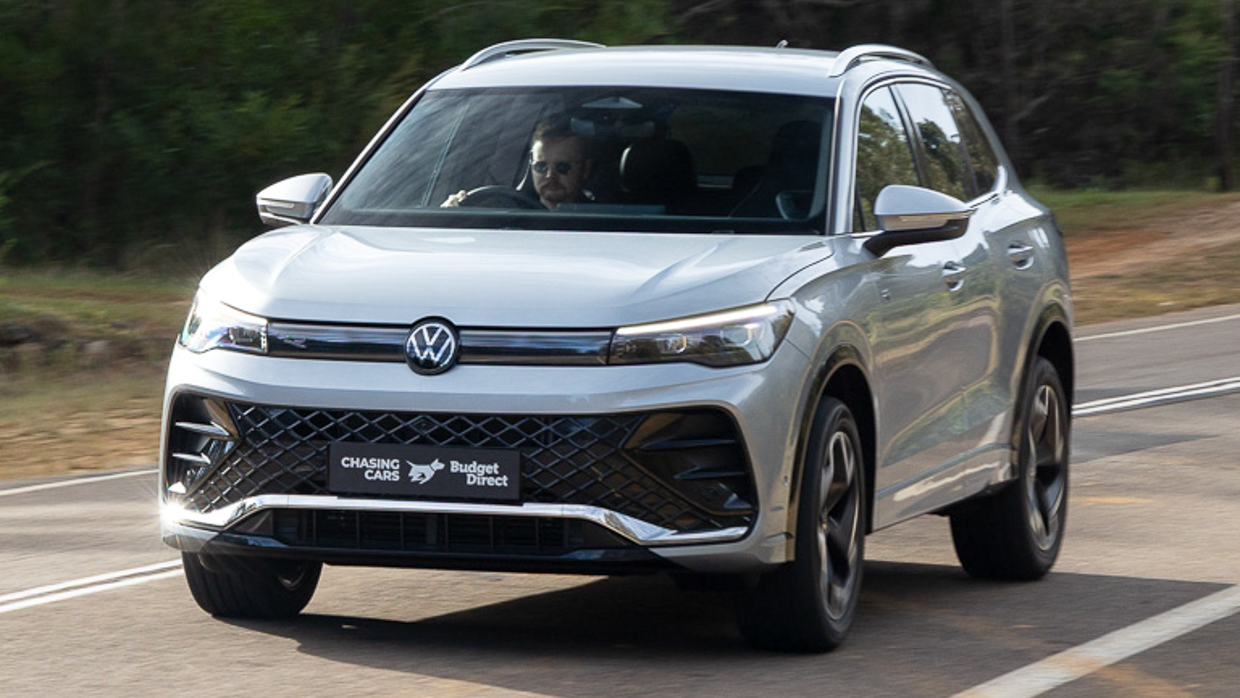
The 150TSI’s 2.0-litre engine and AWD combination uses more fuel than expected at low speed, meaning the Tiguan’s real range in urban areas is similar to the electric Volkswagen ID4.
Service intervals are 12 months/15,000km, and scheduled maintenance for the Tiguan is a little cheaper if you purchase an up-front Care Plan for $3320 when you buy the car, covering five years/75,000km.
The Tiguan is covered by a five-year, unlimited-kilometre warranty.
We are impressed with the new Volkswagen Tiguan, which retains the roomy interior and the polished, fun driving dynamics of the previous version while restoring a level of refinement and luxury to the interior that should be associated with VW.
With the possible exception of the expensive 195TSI (which is a capable placeholder until a Tiguan R returns in future), the range makes sense. There’s a price-leading Life entry grade, or you can ‘choose your own adventure’ with the plush Elegance, or the athletic R-Line.
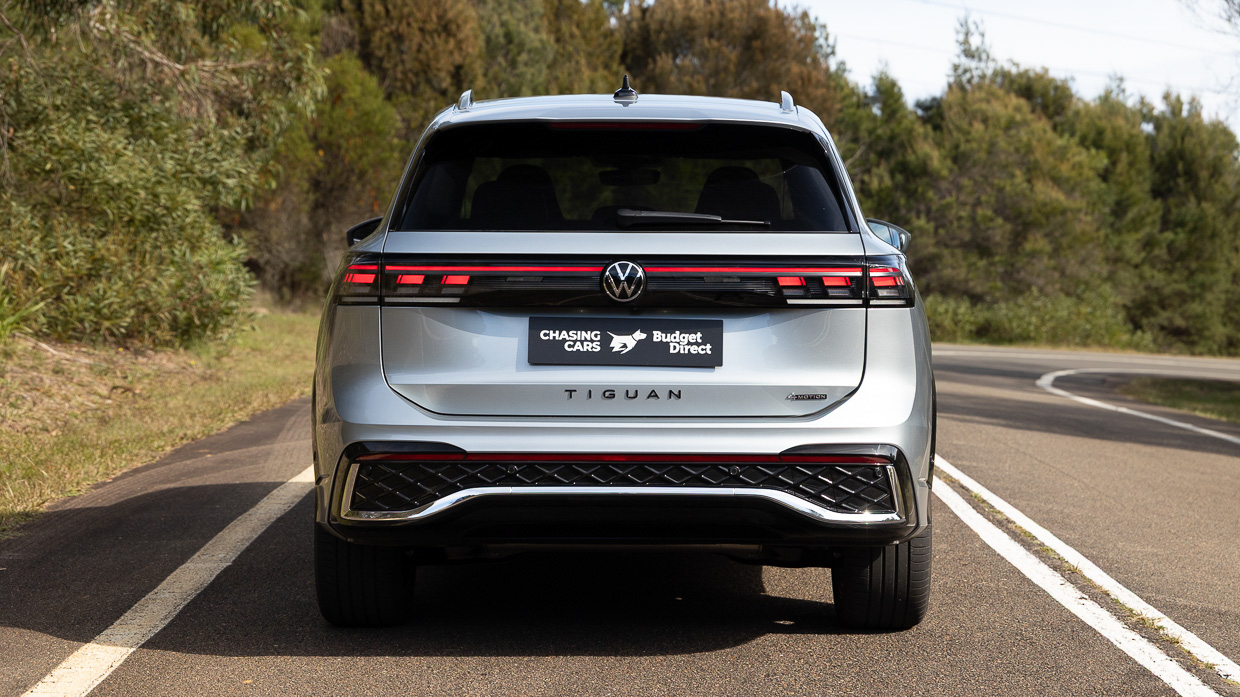
We understand why, in its understated brand rebuild phase, Volkswagen has chosen to keep the powertrain spread simple by focusing on the turbo-petrol engines it does so well.
That said, in future, we’d like to see the Tiguan platform fully exploited with the offering of plug-in hybrid engine options, which offer 152kW or 202kW of power in Europe alongside about 100km of pure-electric running — useful for Aussie families who aren’t ready for a full EV.
Until then, for keen drivers who don’t mind non-leather, manually-adjusted seats, the 150TSI R-Line is the ‘sweet spot’ Tiguan.
Key specs (as tested)
About Chasing cars
Chasing Cars reviews are 100% independent.
Because we are powered by Budget Direct Insurance, we don’t receive advertising or sales revenue from car manufacturers.
We’re truly independent – giving you Australia’s best car reviews.
The estimate provided does not take into account your personal circumstances but is intended to give a general indication of the cost of insurance, in order to obtain a complete quote, please visit www.budgetdirect.com.au. Estimate includes 15%^ online discount.
^Conditions Apply
Budget Direct Insurance arranged by Auto & General Services Pty Ltd ACN 003 617 909(AGS) AFSL 241 411, for and on behalf of the insurer, Auto & General Insurance Company Limited(ABN 42 111 586 353, AFSL 285 571).Because we don’t know your financial needs, we can’t advise you if this insurance will suit you. You should consider your needs and the Product Disclosure Statement before making a decision to buy insurance. Terms and conditions apply.
Indicative quote based on assumptions including postcode , 40 year old male with no offences, licence suspensions or claims in the last 5 years, a NCD Rating 1 and no younger drivers listed. White car, driven up to 10,000kms a year, unfinanced, with no modifications, factory options and/or non-standard accessories, private use only and garaged at night.
^Online Discounts Terms & Conditions
1. Discounts apply to the premium paid for a new Budget Direct Gold Comprehensive Car Insurance, Third Party Property Only or Third Party Property, Fire & Theft Insurance policy initiated online on or after 29 March 2017. Discounts do not apply to optional Roadside Assistance.
2. Discounts do not apply to any renewal offer of insurance.
3. Discounts only apply to the insurance portion of the premium. Discounts are applied before government charges, taxes, levies and fees, including instalment processing fees (as applicable). The full extent of discounts may therefore be impacted.
4. We reserve the right to change the offer without notice.